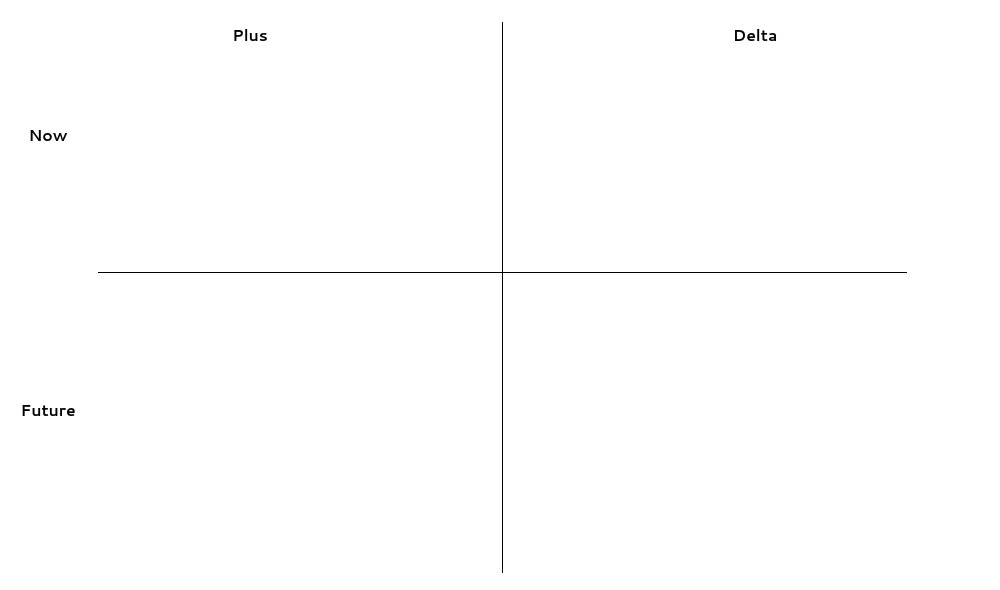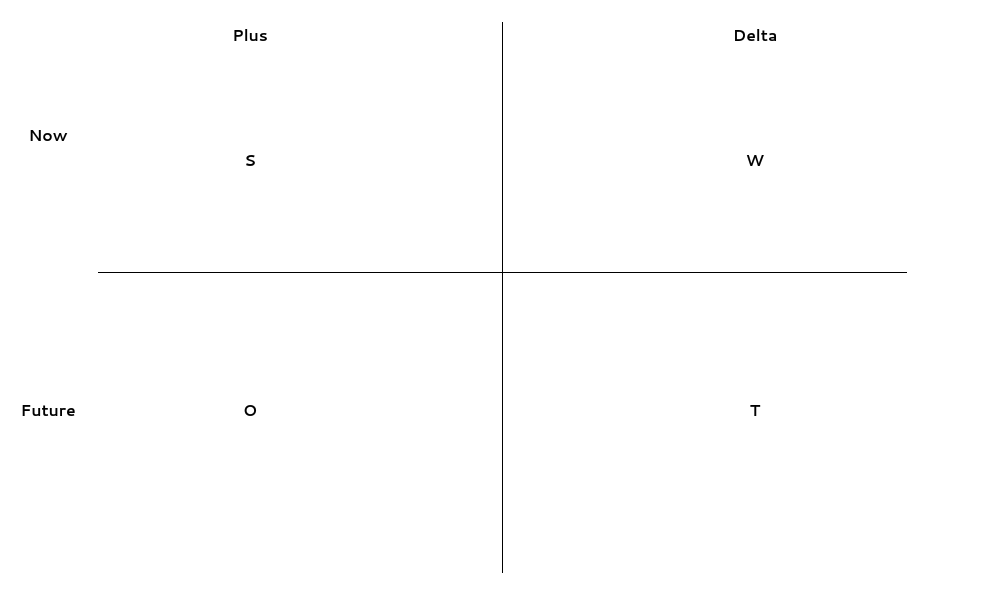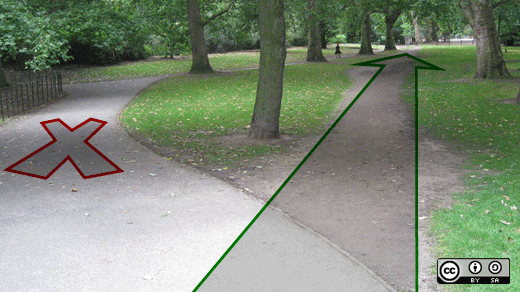You may be familiar with the "SWOT" decision-making tool. It's a methodology for helping teams clearly outline a set of conditions, compare options, and make transparent decisions based on an idea's Strengths, Weaknesses, Opportunities, and Threats ("SWOT"). SWOT is an efficient tool in my strategic planning toolkit.
However, I find engaging in SWOT directly can lead to some confusion. While team members may be able to easily identify "Strengths" and "Weaknesses" (those are fairly straightforward concepts that most teams are probably thinking about already), I find folks tend to struggle with "Opportunities." What is an "opportunity"? In meetings, people may equate "opportunity" as a business opportunity, which isn't the point of the SWOT exercise. Or they get stuck on "Threats." The word carries a different meaning in digital technology work, especially if you work in security: "Threat" often means "hacker." Instead, you really want participants to identify trouble spots down the road.
In my experience, it's easier to not address SWOT directly, but to come at it from a different direction. You may be familiar with a "Plus/Delta" exercise. At the end of a meeting or after an event, you might talk about the things that went well (Plus) and the things to change for next time (Delta). I find that combining this language with a traditional SWOT approach to project planning can lead to more flexible and effective results.
This exercise explains how to do it. It involves two "phases" of work. The first consists largely of preparation; the second is execution.
Facilitation steps
Phase 1: Preparation
Step 1. Draw a standard Plus/Delta diagram (see Figure 1).

Figure 1 (courtesy of Jim Hall, CC BY-SA)
Step 2. Divide the "Plus/Delta" into two timeframes: "Now" and "Future." You can specify or define these if you need to. For example, you might define "Now" as any time in the next three months, and "Future" as a year or more from now. Use whatever timeframes make sense for what you're after (see Figure 2).

Figure 2 (courtesy of Jim Hall, CC BY-SA)
That's a very easy grid to understand. Most people can talk about what's going well now (Plus-Now) and what things we should change over the next quarter (Delta-Now). And team members can envision what things will be strong for the team in a year's time (Plus-Future) and what things we should change within the next year so they won't be obstacles down the road (Delta-Future).
And when you think about it, that's really what SWOT is about:
- Strengths (Plus-Now)
- Weaknesses (Delta-Now)
- Opportunities (Plus-Future)
- Threats (Delta-Future)

Figure 3 (courtesy of Jim Hall, CC BY-SA)
Phase 2: Execution
Step 1. At your next team meeting, frame discussions using this modified SWOT analysis. What decision are you asking people to focus on? Are you reviewing new technology? Are you discussing a possible change to the infrastructure? Are you making some other decision?
Step 2. After framing the discussion, ask everyone in the room to take some thoughtful time to consider the issue and jot any ideas on a piece of paper. What is going well now (Plus-Now)? What things should we change now (Delta-Now)? What things do you expect will continue to be strong for us next year (Plus-Future)? What things do we need to change in the next year so we don't run into problems (Delta-Future)?
Step 3. To aid discussion, break up the room into small groups, each with about five people. Have each group discuss each quadrant of the SWOT as a group. Give them fifteen minutes to highlight, review, and agree to their group's top three Strengths, Weaknesses, Opportunities, and Strengths.
Reflection
After the room has discussed the aspects of the decision, bring everyone together to discuss. Go around the room, and ask each group to identify one item from each quadrant: What is going well now (Plus-Now)? What things should we change now (Delta-Now)? What things do you expect will continue to be strong for us next year (Plus-Future)? What things do we need to change in the next year so we don't run into problems (Delta-Future)?
For example, start with Plus-Now, and ask "Group #1: give me one item that is working well now; Group #2: what's something else that is working well today?" And so on. Draw the Plus/Delta, Now/Future grid on a whiteboard, and capture each idea in this grid so everyone can follow the discussion. Plan for the group discussion to take about twice the time you give the individual group time. So if you have people break into groups for fifteen minutes, I find it will take about thirty minutes to do the whiteboard discussion at the end.
This article is part of the Open Organization Workbook project.






Comments are closed.